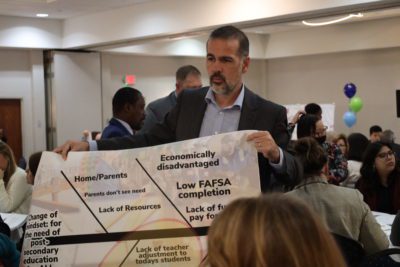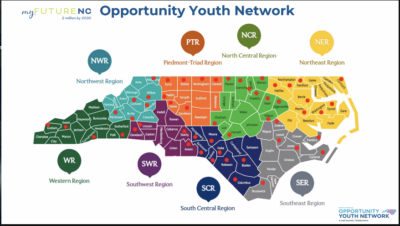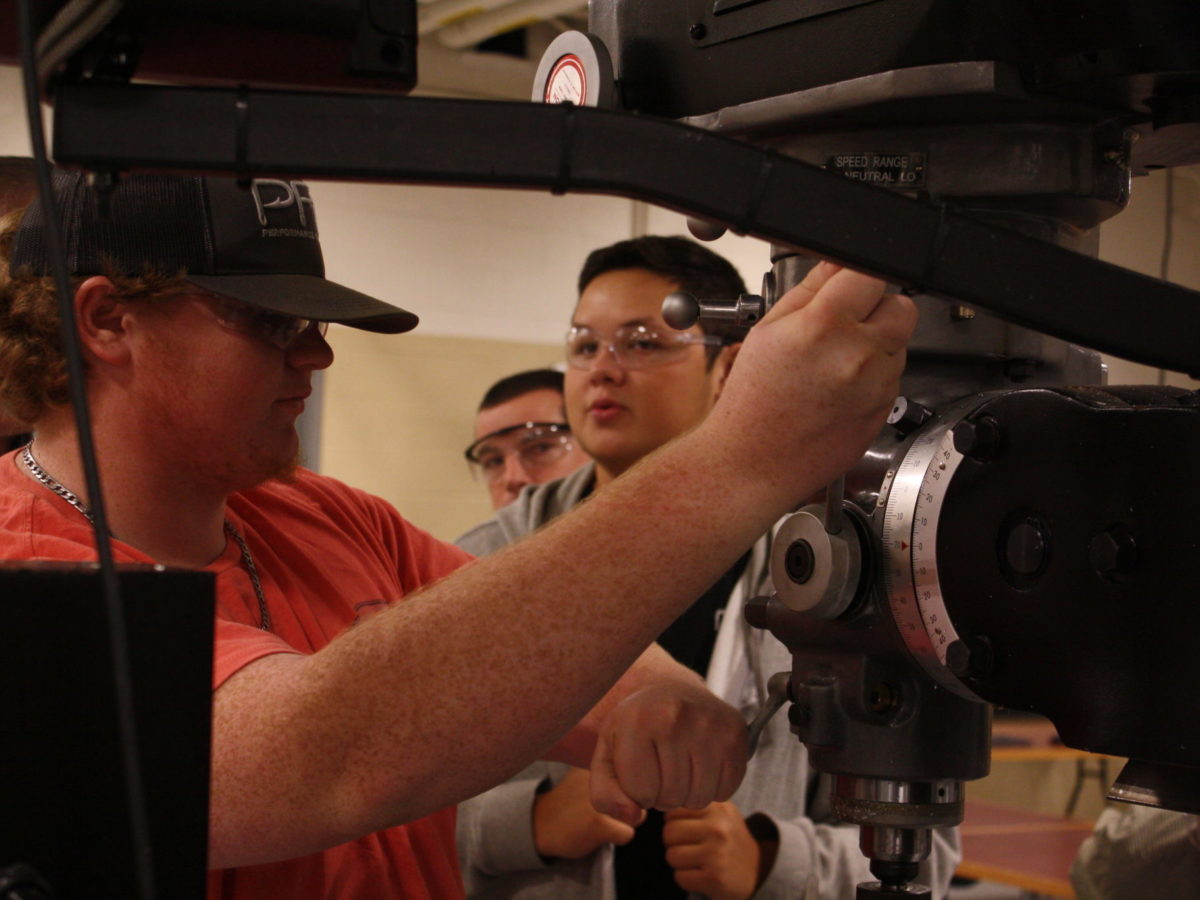

|
|
At the State Board of Education meeting this week, members heard about data that will give North Carolina a leg up on reaching its attainment goal: 2 million North Carolinians with a postsecondary degree or credential by 2030.
That ambitious goal is double the growth that was expected in the state without intervention when the goal was announced in 2019.
The data set comes from the National Student Clearinghouse, which collects data from its member schools on students going into postsecondary institutions. According to Jeni Corn, the Department of Public Instruction’s (DPI) director of research and evaluation, 98% of postsecondary institutions in the country participate with and provide data to the National Student Clearinghouse, including public, private, in-state, and out-of-state two- and four-year institutions.
“Between this data set and the incredible amount of data that the (DPI) Office of Learning Recovery has provided districts … it’s safe to say that our local leaders have an unprecedented amount of data,” said State Superintendent Catherine Truitt at the Board meeting this week. “I’m incredibly excited about the possibilities for our local leaders to make data driven decisions.”
Basically, this data will allow the state to look at what happens to its graduating high school students when they move on to the next phase of their academic career anywhere in the country: where they enroll or transfer, whether they graduate or not, how long it takes them, and more.
DPI can then work with schools and districts to help them better understand what happens with their students after graduation, and, hopefully, help them assist students in planning their futures.
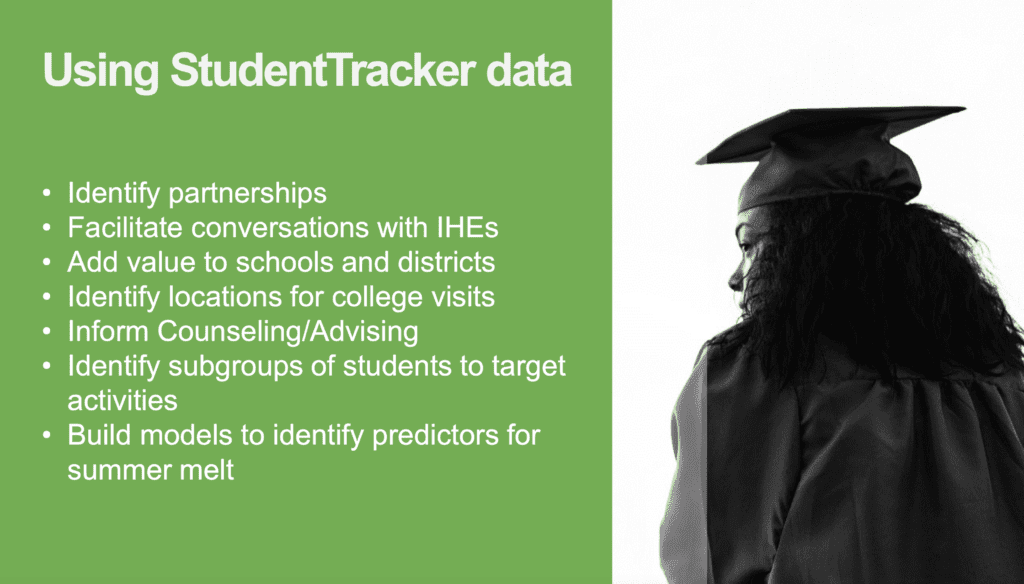

Below, you can see the data for the graduating class of 2014. A key at the bottom identifies what the colors mean. The section in yellow are those students who are no longer enrolled at a postsecondary institution or haven’t graduated.
“It allows us to see who is being left out,” Truitt said, “Who is not completing. Who is not persisting.”
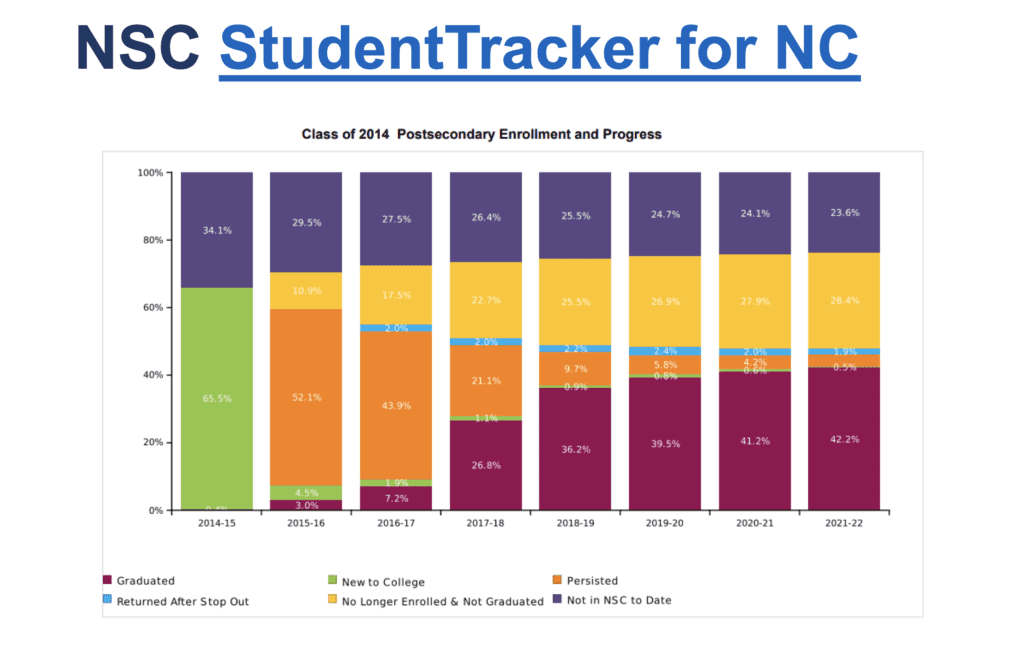

This kind of information is important in light of the state’s attainment goal.
That goal was first announced in 2019 by the myFutureNC Commission, which has since become a nonprofit. The organization released a report in August showing that the attainment goal may be a difficult lift.
“The data shows that while some metrics are trending in the right direction, the majority are flatlined or lagging,” a press release stated.
The 2022 North Carolina’s State of Educational Attainment Report released by the group also identifies what is needed in the state to reach the attainment goal, as well as solutions to the challenges facing the state.
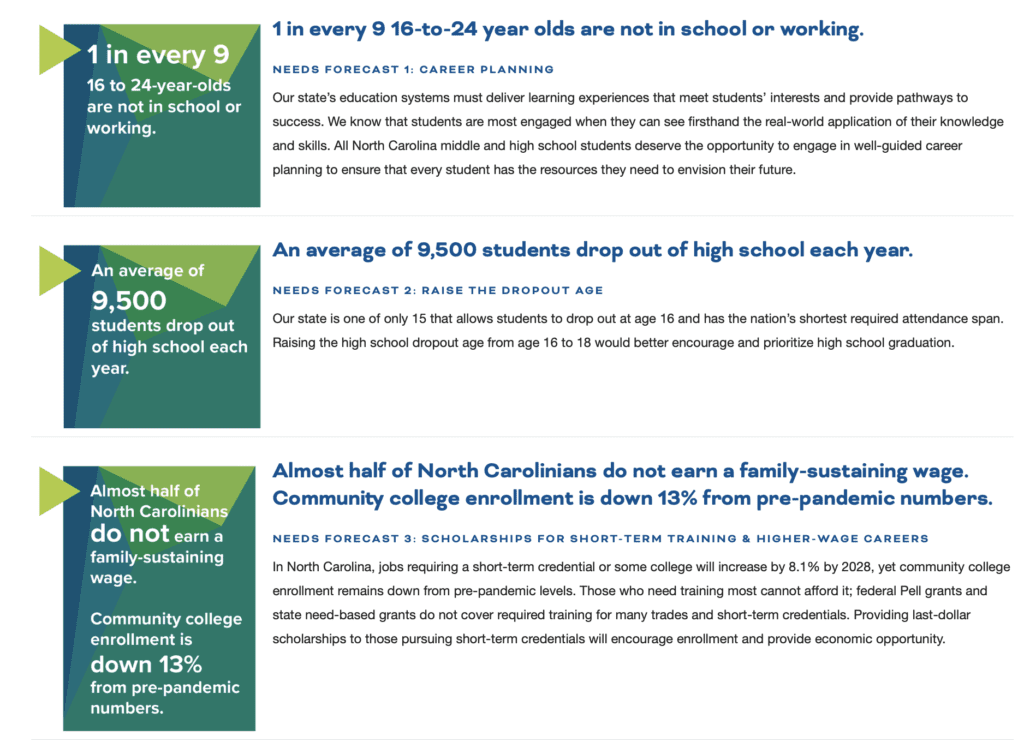

myFutureNC also released county attainment profiles in late 2022 that will help with identifying where work needs to be done. They show “educational attainment levels and performance on key myFutureNC metrics” for each of the 100 counties in the state.
You can see that here.
But the state’s attainment goal won’t be achieved just by myFutureNC.
Anyone who wants can join myFutureNC virtually on Monday, Feb. 6 from 3 to 3:45 p.m., according to an invitation from the organization. They will “share the top findings from the North Carolina’s State of Educational Attainment Report and propose solutions to address the state of emergency around workforce talent and the education pipeline in NC.” They “will highlight success stories and forecast needs and clear solutions to help us achieve the educational attainment goal of 2 million degrees or industry-valued credentials by 2030 among North Carolinians ages 25-44.” You can sign up here to attend the event.



